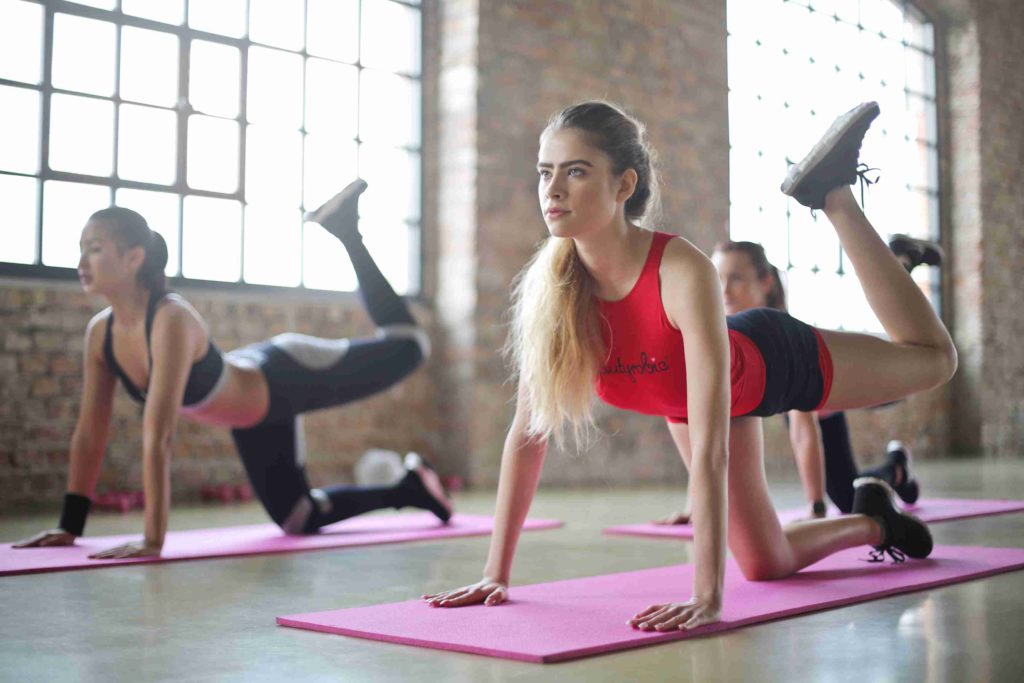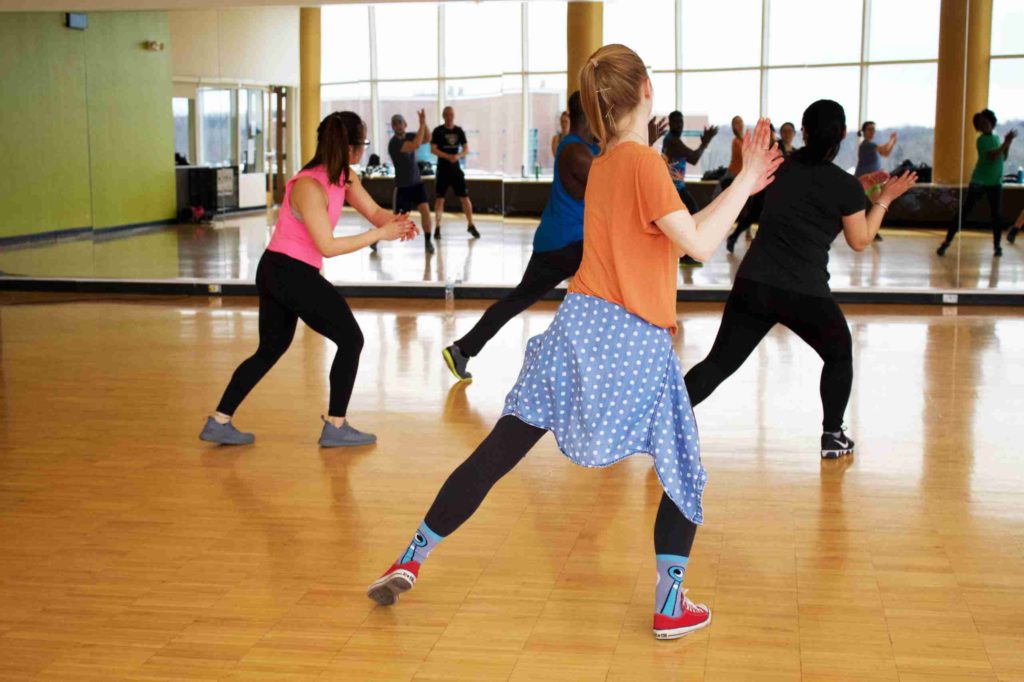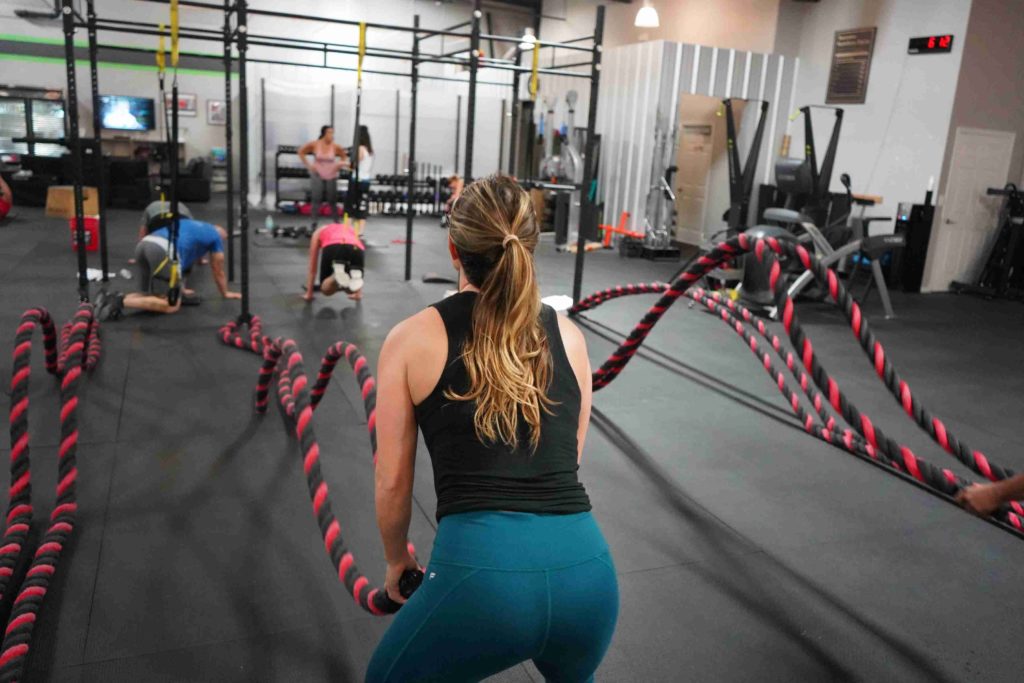In 2023, the fitness trends are expected to be a dynamic blend of technology and personalization, that aim at holistic well-being. Embrace the power of these fitness trends to positively impact your health.
Personalised fitness programmes tailored to individual goals and preferences have become increasingly popular, empowering individuals to achieve optimal results.
What are Fitness Trends?
A fitness trend refers to a popular or prevailing pattern of activities, behaviours, or products related to physical fitness and exercise. It encompasses the latest fads, practises, and preferences followed by individuals or communities in their pursuit of a healthy lifestyle.
Fitness trends can vary widely and may include activities such as high-intensity interval training (HIIT), wearable fitness technology, group workout classes, or specific diets like ketogenic or plant-based eating.
Current fitness being evolved into a holistic approach has gone beyond traditional workouts. It encompasses a blend of technology, mindfulness, and personalised fitness experiences aimed at improving overall well-being.
From virtual reality workouts and wearable tech tracking to mind-body exercises like yoga and meditation, the fitness landscape in 2023 emphasises individualised goals to achieve wellness.
Let’s dive deeper into the fitness trends of 2023 and explore the new and innovative ways people are staying active and healthy.
1. WEARABLE TECHNOLOGY
Wearable technology has revolutionised the fitness industry, providing individuals with tools to track and monitor their fitness activities and health metrics.
These wearable devices including fitness trackers, smartwatches, and heart rate monitors have become increasingly popular among fitness enthusiasts.
These devices not only provide real-time data on steps taken, calories burned, and heart rate but also offer personalised workout recommendations and reminders to stay active. With the help of wearable technology, individuals can easily set goals, track their progress, and make informed decisions about their fitness routines.
Embracing this fitness trend can greatly enhance one’s motivation and accountability towards achieving their health and wellness goals.
A review from The Lancet Digital Health highlighted that wearable techs, such as fitness trackers and smartwatches, can effectively monitor and track various aspects of physical activity, including steps taken, heart rate, and calories burned.
This data can provide individuals with valuable insights into their daily activity levels and motivate them to make healthier daily choices.
Additionally, the study suggested that incorporating wearable tech into personalised fitness programmes can lead to better adherence and long-term success in achieving fitness goals.
Benefits of Using Fitness Trackers and Smartwatches
| Activity tracking | Ability to monitor various metrics, including steps taken, distance travelled, calories burned, and active minutes. This information helps individuals set goals, track progress, and stay motivated to achieve their fitness targets. |
| Heart rate monitoring | Enables users to understand their heart rate zones during exercise and assess their cardiovascular fitness levels. |
| Sleep tracking | Wearable devices often come with sleep-tracking features that analyze sleep duration, quality, and patterns. This information can help users improve their sleep habits and optimise recovery. |
| Goal setting and reminders | Allow setting personalised goals and receive reminders to stay active, drink water, or take breaks. These features promote accountability and encourage healthy habits throughout the day. |
| Integration with mobile apps | Most wearable devices sync with mobile apps, providing a comprehensive overview of fitness data and allowing users to track their progress over time. These apps often offer additional features such as workout plans, nutrition tracking, and social communities for added support and motivation. |
2. FUNCTIONAL TRAINING
Functional training is a kind of exercise that focuses on motions and exercises that simulate real-life tasks to develop balance, strength, coordination, and flexibility.
The goal of functional training is to improve total functional fitness, allowing people to do daily chores more effectively and avoid injuries.
Traditional weightlifting exercises focus on isolating individual muscles whereas functional training emphasises coordinated motions that work for numerous muscle groups at the same time.
Functional training can be tailored to meet the specific needs and goals of individuals, making it suitable for people of all fitness levels, as it helps to improve overall body stability and mobility. It also promotes better body mechanics and helps improve posture, making it beneficial for those with sedentary lifestyles or desk jobs.
Take a look at which exercises benefit you with what results
| Functional Exercises | Muscles Involved | Benefits |
| Squats | Quadriceps, Hamstrings, Glutes | Strengthens lower body, improves mobility and balance |
| Lunges | Quadriceps, Hamstrings, Glutes | Builds leg strength, improves stability and coordination |
| Push-ups | Chest, Shoulders, Triceps | Builds upper body strength and endurance |
| Planks | Core muscles | Enhances core stability and improves posture |
| Deadlifts | Hamstrings, Glutes, Back | Increases overall strength and power |
| Kettlebell swings | Glutes, Hamstrings, Core | Improves cardiovascular fitness and explosive power |
| Battle ropes | Arms, Shoulders, Core | Engages multiple muscle groups, boosts endurance |
| Medicine ball throws | Shoulders, Chest, Core | Enhances power, coordination, and explosive strength |
| TRX suspension training | Full body | Builds overall strength, stability, and flexibility |
| Step-ups | Quadriceps, Glutes, Calves | Increases leg strength, improves balance and stability |
How to Incorporate Functional Training into Your Workouts?
- Start with bodyweight exercises, focusing on proper form and gradually increasing.
- Include multi-joint movements
- Stress on stability and balance
- Utilize functional equipment (kettlebells, resistance bands, and stability balls)
- Seek guidance from a professional
Additionally, functional training can be customised to target specific areas of weakness or to address specific goals, making it a versatile and effective form of exercise.
3. GOING GLUTEN-FREE
This trend is driven by the belief that the elimination of gluten from the diet can lead to weight loss, better skin health, improve digestion, and increase energy levels. A gluten-free diet typically involves the elimination of gluten, a protein found in wheat, barley, and rye.
The gluten-free diet has gained significant popularity in recent years, not only among individuals with gluten sensitivity or celiac disease but also as a fitness trend embraced by fitness enthusiasts.
Many fitness influencers and experts have started incorporating gluten-free eating plans into their fitness routines, promoting their benefits for overall health and well-being.
This trend has led to the development of numerous gluten-free food options and recipes, making it easier for individuals to follow this diet while still enjoying a variety of delicious meals.
A gluten-free diet must be incorporated into daily life, which necessitates education, label reading, and an emphasis on naturally gluten-free whole foods.
Pros and Cons of Going Gluten-Free
| Pros of the Gluten-Free Fitness Trend | Cons of the Gluten-Free Fitness Trend |
| Improved digestive health | Potential nutritional deficiencies |
| Increased awareness of food choices | Higher cost of gluten-free products |
| A personalised approach to nutrition | Limited food choices and dining out challenges |
Although adopting a gluten-free diet is essential for people with celiac disease or gluten intolerance, it is important to note that following a gluten-free diet may not necessarily result in these benefits for everyone.
4. High-Intensity Interval Training (HIIT)
HIIT is something that is never out of fashion, thanks to its amazing benefits.
High-Intensity Interval Training (HIIT) is a type of cardiovascular exercise that consists of alternating short bouts of intensive activity with brief rest intervals. This training strategy is well-known for its efficiency and efficacy in enhancing cardiovascular fitness, calorie burn, and metabolism.
HIIT exercises are often shorter, lasting between 15 and 30 minutes, but deliver a high degree of intensity and difficulty.
In addition to its physical benefits, HIIT has gained popularity in the fitness world due to its time-saving nature. With busy schedules becoming the norm, HIIT allows individuals to get a full-body workout in a shorter amount of time compared to traditional cardio exercises.
Moreover, the versatility of HIIT workouts makes them suitable for people of all fitness levels, as exercises can be modified and adjusted to meet individual needs and goals.
HIIT is known as the “afterburn effect” or excess post-exercise oxygen consumption (EPOC). Additionally, HIIT has been found to improve insulin sensitivity and glucose regulation, making it beneficial for individuals with diabetes or at risk of developing diabetes.
HIIT workouts offer numerous benefits, including increased calorie burn, improved cardiovascular fitness, time efficiency, fat loss, and a metabolic boost. These intense bursts of exercise, followed by recovery periods, challenge the cardiovascular system, leading to better heart health and endurance.
These workouts are ideal for busy schedules because they reduce body fat and improve body composition. Additionally, HIIT workouts can elevate the metabolic rate, resulting in increased calorie burn even after the workout.
Different HIIT Workouts & Their Benefits
| HIIT Workouts | Description | Effectiveness |
|---|---|---|
| Tabata | 20 seconds of high-intensity exercise followed by 10 seconds of rest | Improves aerobic and anaerobic fitness levels |
| Circuit training | Series of exercises targeting different muscle groups with minimal rest | Provides a full-body strength and cardio workout |
| Sprint intervals | Alternating between all-out sprints and active recovery periods | Improves speed, power, and cardiovascular fitness |
| AMRAP | As Many Rounds as Possible – Complete a set of exercises in a given time | Increases endurance and overall fitness |
| EMOM | Every Minute on the Minute – Perform a specific exercise within a minute | Enhances cardiovascular capacity and time management |
| 5×5 | Five sets of five reps with heavy weights | Builds strength and muscle mass |
| Pyramid | Start with low reps, gradually increase, and then decrease back down | Improves muscular endurance and mental toughness |
| 30-20-10 | Intervals of 30 seconds, 20 seconds, and 10 seconds of high-intensity | Enhances speed, agility, and cardiovascular fitness |
| The Deck of Cards | Assign exercises to each card in a deck and perform as drawn | Provides a varied and challenging workout |
| The Spartan 500 | Perform 50 reps of each exercise | Builds muscular endurance and mental resilience |
How to Include HIIT in Your Fitness Regimen?
- Begin with a thorough warm-up.
- Establish work and rest times. Begin with shorter intervals and raise the intensity and duration gradually as you progress.
- Include recuperation periods: Allow enough time in between HIIT exercises for your body to recuperate and adapt to the high-intensity training.
- Exercises should be chosen with caution.
- Keep an eye on your intensity and listen to your body to avoid overexertion or injury.
- Tailor your workout to your fitness level.
- Combine with other types of training, such as strength and flexibility exercises, to produce a well-rounded programme.
To avoid damage and adapt to the demands of HIIT, start at an appropriate intensity and progressively raise the difficulty.
5. ONLINE FITNESS PROGRAMS & APPS
The popularity of online fitness programmes and apps has skyrocketed in recent years. This trend may be attributed to technological developments, improved internet connectivity, and the growing need for convenient and personalised fitness solutions.
Yoga and weight training, as well as HIIT and dance exercises, are available through online fitness programmes and apps. They offer a flexible and handy alternative for people to keep active and reach their health objectives.
In addition, these online fitness programs and apps often provide a wide range of features, such as workout tracking, progress monitoring, and access to expert guidance.
This not only helps individuals stay motivated but also allows them to tailor their fitness routines according to their specific goals and preferences.
Benefits of Online Fitness Programmes and Apps
- Convenient and flexible, as workout classes can be accessed anytime and anywhere.
- Personalised approach with tracking features and other add-on facilities.
- Variety of workouts catering to different fitness levels, interests, and targets.
- Access to expert guidance with the availability of video tutorials and live classes.
- Community and support allow users to connect with like-minded individuals, share progress, and receive support and motivation.
Such benefits generate a sense of community, which enhances accountability and makes the fitness journey more enjoyable.
With the convenience and accessibility, they offer, it’s no wonder that more and more people are turning to these digital platforms for their fitness needs.
Recommended Online Fitness Platforms and Apps in India: Cult.fit, Fittr, Nike Training Club, Yogaia, HealthifyMe, Zyla, and Breath Wellbeing.
It is important to explore different platforms and apps to find the one that aligns with your fitness goals, preferences, and budget.
6. VEGAN DIET

Incorporating plant-based diets into fitness routines has recently been recognized to enhance athletic performance and aid in muscle recovery. It also aligns with the principle of clean eating and a plant-based diet.
Veganism promotes the consumption of nutrient-dense foods that can support overall health and weight management, making it an attractive option for those looking to improve their fitness levels.
Additionally, vegan athletes have showcased impressive performances, debunking the myth that animal products are necessary for optimal fitness and muscle growth, which has further contributed to the rise of veganism as a popular fitness trend.
What is a vegan diet?
A vegan diet is a plant-based eating pattern that excludes all animal products, including meat, dairy, eggs, and honey. It focuses on consuming fruits, vegetables, whole grains, legumes, nuts, and seeds as primary sources of nutrition. This dietary choice promotes compassion towards animals and encourages individuals to explore a wide variety of delicious and nutritious plant-based alternatives that can support overall health and well-being.
Benefits of a vegan diet
A vegan diet has been associated with numerous health benefits, including a lower risk of heart disease, type 2 diabetes, and certain types of cancer. It can also aid in weight management and improve digestion due to its high fibre content.
By combining regular exercise with a vegan diet, individuals can optimize their overall health and achieve their fitness goals effectively.
It requires fewer resources and produces fewer greenhouse gas emissions compared to traditional animal-based diets. Hence, it can also be a sustainable and environmentally-friendly choice.
Recommended Article: Vegan Diet – A Complete Beginner’s Guide
Health Benefits
Positive impact on heart health by lowering the risk of cardiovascular diseases like hyperlipidaemia, hypertension, heart attack, etc. This is due to the absence of saturated fats and cholesterol found in animal products. Additionally, a vegan diet is typically rich in fibre, antioxidants, and plant-based nutrients that promote cardiovascular health.
Environmental Benefits
Adopting a vegan diet aligns with sustainable living and reducing environmental impact. Environmental Sustainability is a major attracting factor for the vegan diet trend.
A vegan diet also helps conserve water and preserve biodiversity. By eliminating animal agriculture, a major contributor to deforestation and habitat destruction, the vegan diet supports the protection of ecosystems and wildlife.
This makes it an ideal choice for those who are conscious about the environment and want to make a positive impact through their dietary choices.
7. MIND-BODY WORKOUT

Pilates and yoga are among the popular workouts belonging to this category. These are practised aiming to generate a connection between the mind and the body.
These workouts focus on improving flexibility, strength, and balance while also promoting relaxation and stress reduction. They can be beneficial for individuals of all fitness levels and ages, providing a holistic approach to overall well-being.
Physical & Mental Benefits
| Physical Benefits | Mental Benefits |
| Improved flexibility | Reduced stress and anxiety |
| Increased strength | Enhanced mental focus |
| Better posture | Improved mood |
| Enhanced balance | Increased self-awareness |
| Improved joint mobility | Better sleep quality |
| Increased body awareness | Enhanced mindfulness |
| Reduced muscle tension | Increased relaxation |
| Better breathing patterns | Improved emotional well-being |
Different Types of Mind-Body Workouts and Their Unique Features

| Type | Features |
| Yoga | Combination of poses, breathing exercises, and meditation to improve flexibility, strength, and inner calmness. |
| Different styles include Hatha, Vinyasa, Ashtanga, and Bikram. | |
| Pilates | Focuses on core strength, body alignment, and controlled movements. |
| It incorporates equipment like reformers and focuses on controlled breathing and precise movements. | |
| Tai Chi | Slow and graceful movements combined with deep breathing and mental focus. |
| It promotes relaxation, balance, and energy flow. | |
| Qigong | Combines physical postures, breathing techniques, and meditation to cultivate and balance the body’s vital energy. |
| It promotes relaxation, mindfulness, and overall well-being. | |
| Barre | A fusion of ballet-inspired movements, Pilates, and yoga. |
| It focuses on small, isometric movements to target specific muscle groups and improve strength, flexibility, and posture. | |
| Feldenkrais | A method that uses gentle movements and self-awareness to improve body movement, flexibility, and coordination. |
| It promotes relaxation and releases tension. |
Recommended Article: Home Workout: Simple Home Workout for Greater Impacts
Conclusively,
These trends cater to the growing demand for convenient and personalised fitness solutions. And also align with the increasing awareness about health and sustainability. By embracing these trends and keeping in mind the pros and cons of all the trending fitness alternatives, you can make informed choices to achieve a healthier and fitter body.
Frequently Asked Questions
Q. Does following fitness trends necessarily make you fit?
Following a trend does not ensure fitness. It may make you appear cool among your peers, but it does not necessarily make you fitter! This is because the body seeks only what it truly requires, which is not influenced by trends or fashion. Fitness trends and fashion may promote certain exercises or diets. And yet not align with what your body truly needs for optimal fitness.
Q. How could the fitness trend potentially help you get in shape?
It is important to understand that the fitness trend can potentially help individuals get in shape. But only if they approach it with a careful and rational mindset.
The key to becoming fit is understanding your body’s unique requirements and tailoring your fitness routine accordingly, rather than blindly following trends.
This means incorporating the trend into a well-rounded fitness routine that includes proper nutrition, regular exercise, and personalised goals. Simply following the trend without considering individual needs and abilities may not lead to the desired fitness outcomes.
Q. Why should you pick one or a combination of fitness trends for yourself?
By introducing different fitness trends, you can challenge your body in new ways and prevent it from reaching a plateau.
Incorporating diverse workouts can help target different muscle groups and improve overall strength and endurance. This can lead to continued progress and improved overall fitness.
Additionally, trying out different fitness trends can be exciting and enjoyable. It makes staying motivated and committed to your workout routine easier.
Recommended Article: Top Healthy Salads You Must Try Now!











